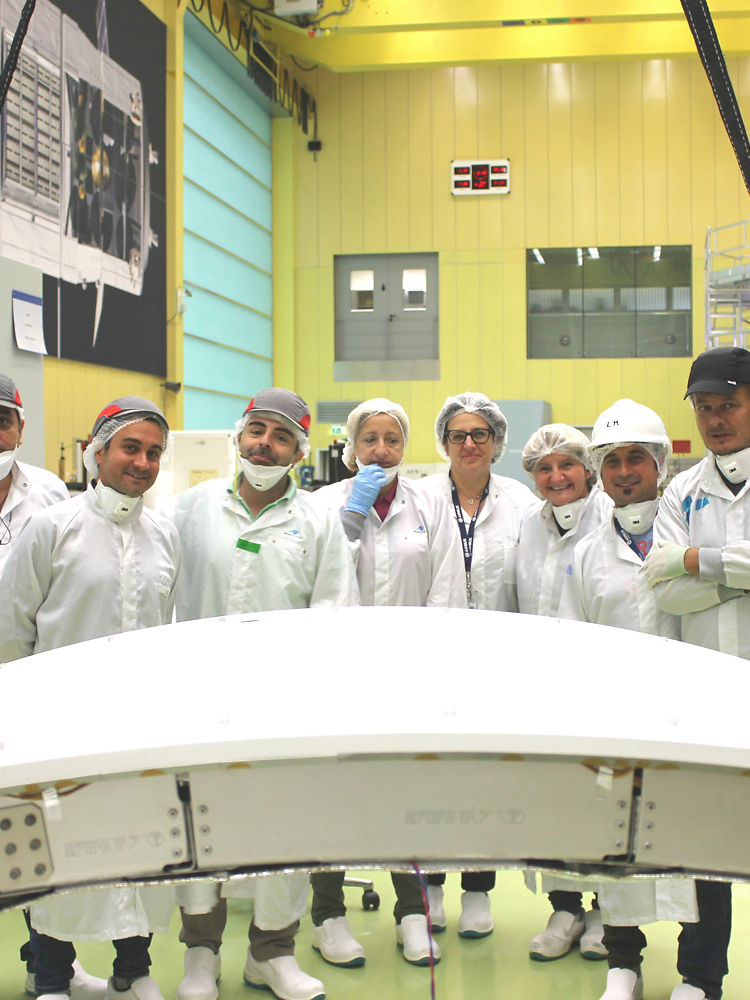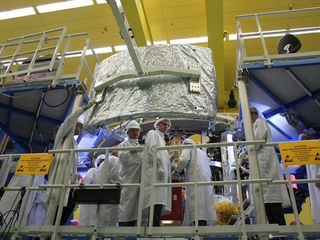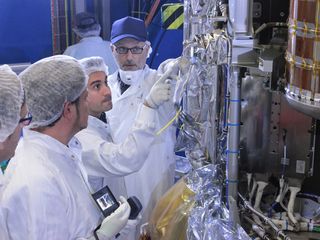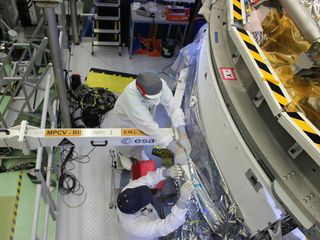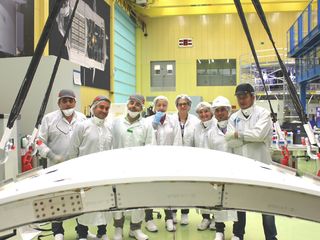Orion European Service Module shortly before delivery to ESA and NASA
This week the joint integration team of Airbus, ArianeGroup and Thales Aleina Space installed the radiators on the service module, one of the last integration steps before delivery to the Kennedy Space Centre in the USA.
This step was preceded by a very intensive production planning and test phase. "This step required lengthy preparations," explains Paolo Artusio, who heads the Airbus integration team. "Although the hardware has been on site for some time, we had to pass a series of tests and confirm all quality requirements before closing the module."
Matthias Gronowski, Orion-ESM Chief Engineer of Airbus in Bremen: "I am happy and very proud of our integration team that work here in three shifts every day and does everything to complete our ESM. I can only express my deepest thanks and respect to all my colleagues."
The radiators are part of the Orion thermal control system and cover the service module. Once mounted, the service module is closed and can only be opened again with great effort. On its journey to the moon, Orion will be exposed to extreme environmental conditions. The thermal control system ensures that the desired temperature conditions are maintained and that the heat generated can be dissipated into space. It consists of a passive and an active subsystem.
The active system is based on a pipe system through which a special liquid (propylene glycol) flows. This absorbs heat from the crew module and the service module and releases it into space via the radiators.
The passive thermal control system consists of heating cables and special insulation, the so-called Multi Layer Insulation (MLI). After completion of the Radiator installation, further tests in the Airbus clean room in Bremen follow, e.g. further pressure tests, before - long expected - the service module makes its way to the KSC in the belly of an Antonov transport machine.
The European Service Module provides the propulsion, power, air and water supply and thermal control for NASA's Orion spacecraft. The first mission is to bring an Orion spaceship - still without astronauts - to the Moon and back to Earth in 2019 / 2020.
